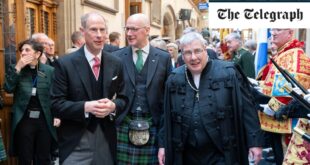We’ve all been used to seeing the Queen’s face on our coins, notes and stamps – but following the death of Queen Elizabeth II on 8 September, this could all change.
We look at what could change and what it means for you.
What will happen to coins and banknotes following the Queen’s death?
Both The Royal Mint and The Bank of England are yet to confirm what will happen to notes and coins, but it is widely expected that the face on these will change to King Charles III. The Royal Mint and The Bank of England have not said when this will happen or how, but we can expect further details later this month on when they will be produced.
There are currently around 29 billion coins in circulation with the Queen’s head on them according to The Royal Mint (opens in new tab). And the Bank of England (opens in new tab) say there are over 4.7 billion banknotes – collectively worth about £82 billion.
The Queen first appeared on Bank of England banknotes in 1960 – after becoming Queen in 1952. The £1 note was the first one to bear her portrait followed by the ten shilling note – issued in 1961.
(Image credit: Bank of England)
In the meantime, coins and banknotes with the Queen’s head on them can still be used as they remain legal tender.
The Bank of England said: “Current banknotes featuring the image of Her Majesty The Queen will continue to be legal tender. A further announcement regarding existing Bank of England banknotes will be made once the period of mourning has been observed.”
With coins – as part of a 300 year old tradition – each King or Queen faces in the opposite direction to the one before, according to the Royal Mint Museum (opens in new tab). This means it’s likely with any new coins that King Charles III will face towards the left.
What will happen to stamps following the Queen’s death?
Royal Mail is yet to announce what will happen to stamps, but just as with notes and coins, it is expected that King Charles III will be the new face on them.
“We will consult Buckingham Palace in the usual way before making any further announcements,” Royal Mail said.
Royal Mail says there are sufficient stocks to fulfil anticipated demand
Unused stamps that have already been issued remain valid for use. These include definitive stamps, (those that show the Queen Elizabeth’s head against a plain background) and special stamps.
Royal Mail said all special stamps that have already been announced will be issued, though the launch dates may be amended.

(Image credit: Getty images)
However, as previously announced, Royal Mail will still be issuing stamps with barcodes – and any stamps without a barcode are only valid until the end of January 2023.
The cypher on post boxes – a way of combining the monarch’s initials and title will remain unchanged on existing post boxes according to the Royal Mail (opens in new tab) and post boxes already in production or being prepared for installation, will also retain the insignia of Queen Elizabeth II.
As the day of HM The Queen’s State funeral is marked as a Bank Holiday, there will be no Royal Mail services on Monday 19 September.
What will happen to passports after the Queen’s death?
British passports will remain valid until their expiry and you do not have to do anything.
However, the wording inside the passport will change at some point.
The first page of a British passport has a representation of the Royal Arms along with the following wording: “Her Britannic Majesty’s Secretary of State requests and requires in the name of Her Majesty all those whom it may concern to allow the bearer to pass freely without let or hindrance and to afford the bearer such assistance and protection as may be necessary.”
This wording will at some stage be changed to replace ‘her’ with ‘his’ to reflect the new King.
Source link


